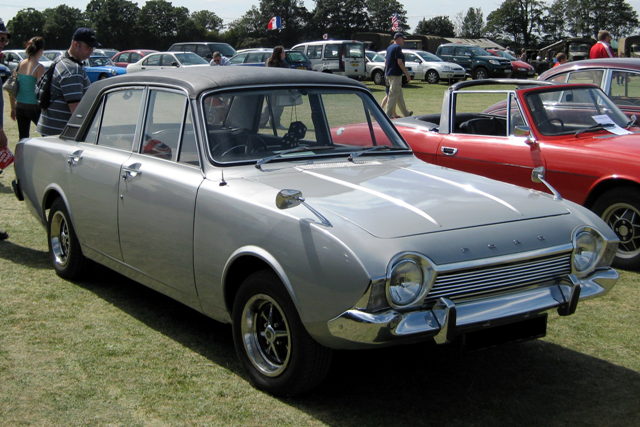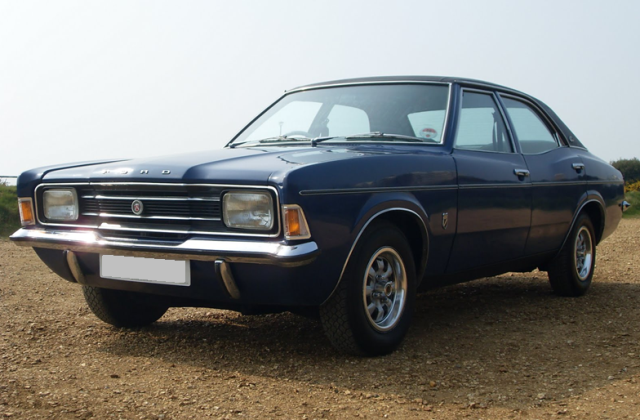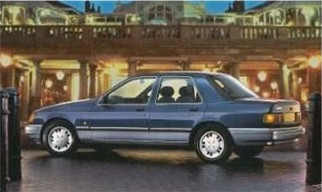2000E
| Ford first adopted the 'E' designation to differentiate the model as having an Executive level of trim. The first car to wear the 2000E badge was the Corsair in January 1967. The Corsair 2000E's appearance differed from other models both internally and externally: outside the car received a black vinyl roof, bespoke wheel trims and chrome door strips to give a more upmarket appearance; inside the dash was covered in walnut veneer, and the interior appointed in black leather-look vinyl (this was the 60's!). Performance was also improved by 7bhp thanks to a new camshaft profile, and servo-assisted brakes and wide radial-ply tyres ensured the most could be made of the extra horses. Production of the Corsair 2000E lasted until June 1970. | ||
Following on from the success of the Corsair, and the well-known Cortina MKII 1600E of the same period, Ford decided to continue the brand by releasing a 2000E model of the popular MK3 "coke bottle" Cortina in 1973 to replace the GXL model. Ford rightly appreciated that the family car was also becoming something of a status symbol and intended to capture the middle and upper executives with more disposable income. Again a vinyl roof and plenty of chrome was standard on the outside, and the interior was appointed in sumptuous velour upholstery and acres of real wood. Under the bonnet was the 98bhp 2-litre Pinto engine and the car sat on smart rostyle wheels. Production ran until 1976. |
||
| The Sierra Sapphire 2000E resurrected the badge yet again from 1989 to 1991 and was to be the last model to do so. Available in three solid metallic colours of Tasman Blue, Flint Grey and Moondust Silver or a unique two-tone shade with the lower half painted in Moonstone Blue, the Sapphire 2000E was adorned with the usual chrome strips and special alloy wheels. Inside it came with all the usual Ghia refinements as well as grey leather upholstery and a trip computer. Air conditioning and all round disc brakes with ABS came as standard too. It was also used to showcase Ford's new I4 DOHC 2-litre engine that would later become common to all 2.0 models replacing the old Pinto unit. The new engine with its twin-cam head, although still only 8-valves contrary to popular belief, produced 123bhp - 10 more than the old Pinto could with fuel injection plus it was far more refined. This came mated to Ford's A4LD automatic gearbox with the option of having the 5-speed manual MT75 instead. | © Ford Motor Company 1989 |
|
© Sprintex-net 2011 - Go to Sprintexnet home


